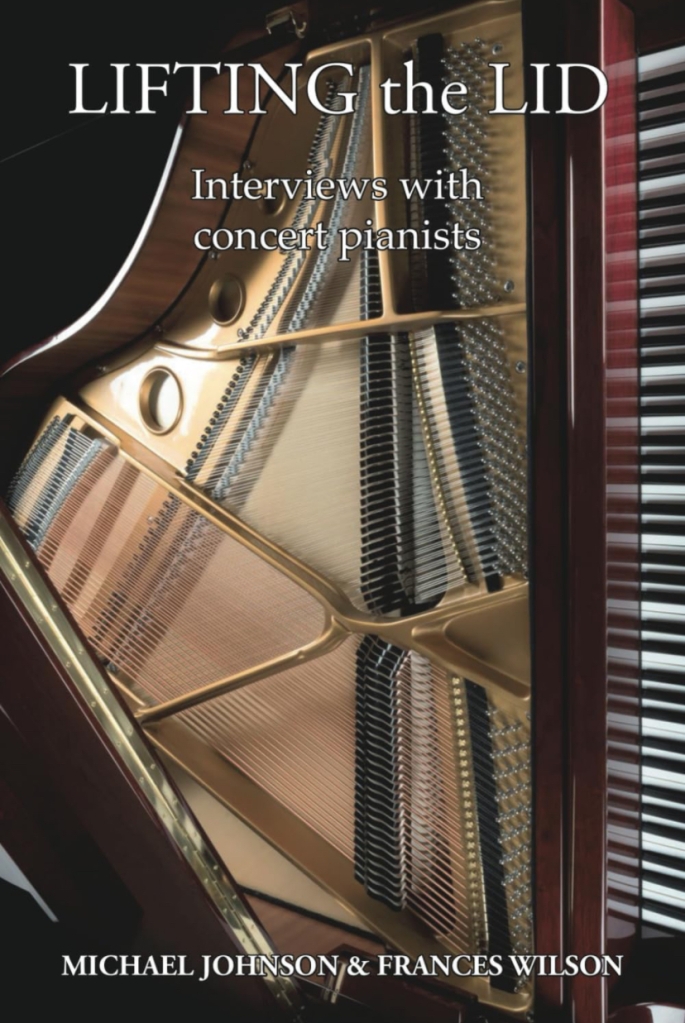Guest post by 1781 Collective
Classical music is elitist.
Classical music puts up barriers to new audiences.
Classical music is inaccessible and unwelcoming.
A fair chunk of us in classical music performance have heard, acknowledged, and pondered the above statements which are uttered often enough to help us understand why a large majority of the population generally doesn’t want anything to do with us.
Our answer? Make it more elitist, build bigger barriers, and make it even more unwelcoming.
That is, on the surface. Whilst it may seem paradoxical to the extreme, our goal is the do the exact opposite: to release classical music from the perceived elitism that admittedly has a monopoly on a product that we as performers feel too passionately about to let go.
UNDERSTANDING OUR CURRENT SITUATION:
First, we need to understand where the accusation of elitism stems from. As it cannot be the complex arrangement of sine waves and overtones that organise themselves into the actual music, it has to be something outside the actual making of it. We point the finger directly at the institutions and organisations that charge themselves with ‘protecting’ classical music, i.e., the gatekeepers surrounding classical music who have spent the past 100 years building a wall around it (or as Daniel Barenboim termed, those in the ‘Ivory Tower’[1]) to make sure it is as hard as possible for an outsider to walk in.
Nowhere is this more obvious than in existing concert formats. For those of us who have attended more than a few concerts, the existing ritual is a wonderful experience. Arriving early to the Philharmonie, Staatsoper, Southbank Centre, Wigmore Hall (or wherever you prefer to get your kicks); having a crémant before the performance; settling down in your seats and waiting for the lights to dim; knowing exactly when applause is due and frowned upon; relishing in the silent nature that allows one to listen intently; having a pretzel during the interval (sorry U.K., the ‘Interval Ice Cream’ is good, the German ‘Pause Pretzel’ is GREAT) – all of these things we happily agree to upon entry because it is familiar, and a great way to listen to music that more often than not, we are acquainted with or have expectations of.
As an industry, we’re always bleating and bashing our heads against the walls to how to convince the white whale of marketing – ‘new, young audiences’ – that what we’re doing is a tonne-of-fun and they should come and shut up and realise what they’ve been missing. What we don’t realise is that telling anyone (not just the new and young) to come into an unfamiliar space filled with people all too willing to let them know when they’ve strayed from an unwritten set of rules, whilst sitting still for two hours to listen to something they’ve not necessarily any connection with… well, it hardly comes off as inviting.
So how does building bigger barriers, expectations, exclusivity, and coating it with a fairly thick pretentious layer of paint go against any of this?
RE-DESIGNING THE CONCERT FORMAT:
One of our first attempts at an answer has been to try and completely decontextualise classical music performance by looking at all the existing rituals inherent in the traditional format, and turn them around to observe how it affects audience enjoyment. These rituals can include (and are not limited to):
- The choosing of concert based on repertoire, performers, instrumentation (generally online or in brochure form);
- Purchasing tickets or reserving seats (generally online or through a ticket office);
- Knowing dress codes and what is generally deemed ‘appropriate’ (seemingly obvious perhaps, though there is without doubt an expectation – bondage gear being generally frowned upon);
- Arrival time at the venue and atmosphere (classical audiences know arriving at least fifteen minutes before is safe, and that there isn’t entry during performance. Non-classical audiences don’t necessarily know this);
- When to applaud (the most contentious issue – no matter how much proof you give to fanatics, we’ll never go back to applauding between movements);
- Communication of additional information through programme notes (is anyone else still worried that something as simple as performer speaking to audience is still referred to as a ‘new’ and ‘big’ change?);
- Sitting silently during performance with as little movement as possible.
Our modifications to these existing rituals include:
- Not communicating at any point who is performing and what repertoire will be presented – allowing us then to programme according to artistic desires rather than hiding a contemporary work between a Beethoven and a Brahms.
- Sending formal invitations to selected guests, chosen to represent a wide variety of networks. Note: at least 80% of audience members are not those who currently engage with classical music on any constant level.
- A strict dress-code policy of all white clothing. Originally this was to change with every performance (for instance, each member would need to wear flowers, or bring a gift), however the success of the white clothing in atmosphere curation has led us to instigate this as a constant across the series.
- Knowledge of the arrival time (between 20:00-20:25), with no exception allowed.
- A blanket ban on all applause – taking out the insecurity that non-classical listeners all experience, which can overwhelm their listening attention by creating a sense of anxiety. Note: repertoire selection needs to support this – large fortissimo perfect cadences tend to leave the audience with the musical equivalent of ‘blue-balls’ if they’re not allowed to express afterwards.
- Subtle communication of repertoire during the performance, and using a candelabra with five candles to let the audience know how many pieces have been played and how many remain.
- Selecting different physical situations for each piece, including standing, kneeling, sitting cross-legged, lying down, eye-gazing with a neighbour, and free positions. The audience is informed that every position is wholly optional, with no insistence.
Finally, we want to address the existing performer-audience dynamic, traditionally based on a top-down model. Referred to by Prof. Julia Haferkorn in The Classical Music Industry as the ‘sit-and-stare’ model, audiences attend a performance as passive consumers: having chosen the particular concert they wish to attend, it is then up to the performer to bear the responsibility for the performance (outside of the audience not moving and clapping in the wrong places). We want to realign this relationship to a horizontal dynamic, with both audience and performer responsible for the outcome of the performance – a further justification for the dress code, arrival time, honouring their RSVP commitment, and non-applause. Primarily, we are looking to create a more direct and honest point of contact for the listener to challenge core communication issue that underlies the current barrier between audience and performer.
THE CASE FOR NEW RITUAL DESIGN:
All of this is geared towards delivering a strong element of value for the audience. By respecting certain requests and requirements, we imbue them with a responsibility which gives them more satisfaction at having contributed to that value. For non-classical audiences, simply begging them to attend because we promise the music will be great is not enough: adding additional layers to it welcomes them to see the event as a whole, separate to their existing notions of what a classical music performance is.
Most importantly, whilst designing these additional layers we are conscious of not letting anything get in the way of experience of the actual music – as our goal is to communicate high-quality classical music, nothing can be gimmicky or without justification. Each layer then is designed to highlight or enhance the listening experience, and we’re fully aware of the fine line that separates ‘effective’ and ‘interruptive’, meaning this process includes an element of trial and experiment. The challenge is to create a natural environment where the audience feels comfortable, whilst simultaneously maintaining the necessary elements of silence and reflection to allow them to delve fully into the music.
Our goal through this concert series is to develop a highly-engaged audience community, who we can then utilise as a base for further performance concepts going forward. By and large, this growing community is completely separate to the existing classical audience: as we have no desire to undermine or attack the traditional concert formats in our long-term mission, we aren’t seeking to convert traditional concertgoers to our methods – hence the focus on developing a new audience base. By ‘engaged’, we hope the attention to experience design, and increased audience responsibility and resulting value improvement, means they won’t attend purely for the Instagram-able nature of the events, or just so they can say ‘we went to this weird space to listen to classical music’. Our goal is not to trick people into liking classical music, but to demonstrate its real value.
Following on from this, we want to create a sense of trust in our product from the community, so they introduce the concept to their immediate networks – i.e., marketing. As mentioned above, the initial invitees have been selected because of the diversity of their networks. Each attendee then is encouraged through ‘Invite Cards’ to select friends they believe would appreciate the performance. Inspired by the members’ club model, we hope this method builds a large and motivated core group of attendees.
RESULTS, GOALS, PROJECTIONS:
Which brings us back to the concept of exclusivity, elitism, and unwelcoming barriers. Yes, on the surface, this is extremely exclusive. However this exclusivity is limited to these early stages of audience-community development – allowing us in the future to curate the larger, open-for-all performances that form our mid-term goals, with the knowledge there is a strong audience base to support. Whilst the images above scream ‘elitist’, we believe it is far removed from the perceived existing elitism that stains classical music in the form of traditional format expectations (which can seem like a private party where the initiated understand, and the ‘plebs’ don’t). And, as explained in detail above, the unwelcoming barriers have a two-fold effect: 1) building value and delegating responsibility to audience members; and 2) taking out uncertainty and anxiety from audiences by communicating exactly what is expected, giving them freedom to operate how they prefer within the clearly defined boundaries.
Is the concept perfect? Of course not, it is still very much a work in progress. Does it hold the answers on how to ‘save’ classical music? Again no, we don’t presume any claims of greatness in this realm. However, our audience retention and engagement has been pleasantly high with a vast majority of guests requesting to come to the next events, and reporting that they previously hadn’t experience such a close connection to classical music. Are we claiming our ideas to be unique? Not at all, they’ve been inspired by the constant historical change within the industry. And is it the only way to break out of the traditional model? Not by a long shot, there are many excellent groups doing some really excellent explorations – and one of our goals is to connect with them all.
Finally, to those who have gotten this far and are still not convinced – that’s great! We have no need to be in competition with you. As it is inconceivable that there is anyone who is actively trying to ruin classical music, it stands to reason that we’re all passionate about developing and communicating classical music to as many people as possible. To those who think everything above is trite and unreasonable, well if this is the case, trust the audience to make that decision – if true, then you probably won’t be hearing much more about it. All we can say is that we are looking forward to the future, and you’re more than welcome along for the ride.
The 1781 Collective.
www.1781collective.com
info@1781collective.com
About the 1781 Collective:
‘Why play along with their system, when we can just create our own?’
1781 is an international collective of musicians and interdisciplinary artists. Launched in Autumn 2018, their mission is to explore new listening and performance methods with music, and offer an alternative to the traditional music industry for both audience and creators.
[1] Quote in Alan Rusbridger’s ‘Play it Again’










